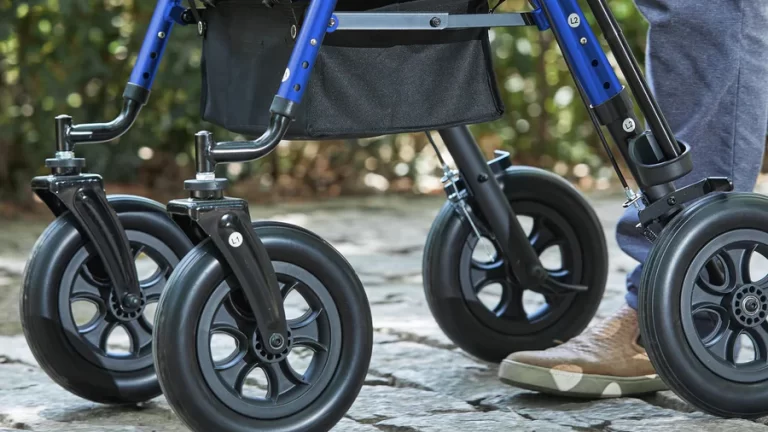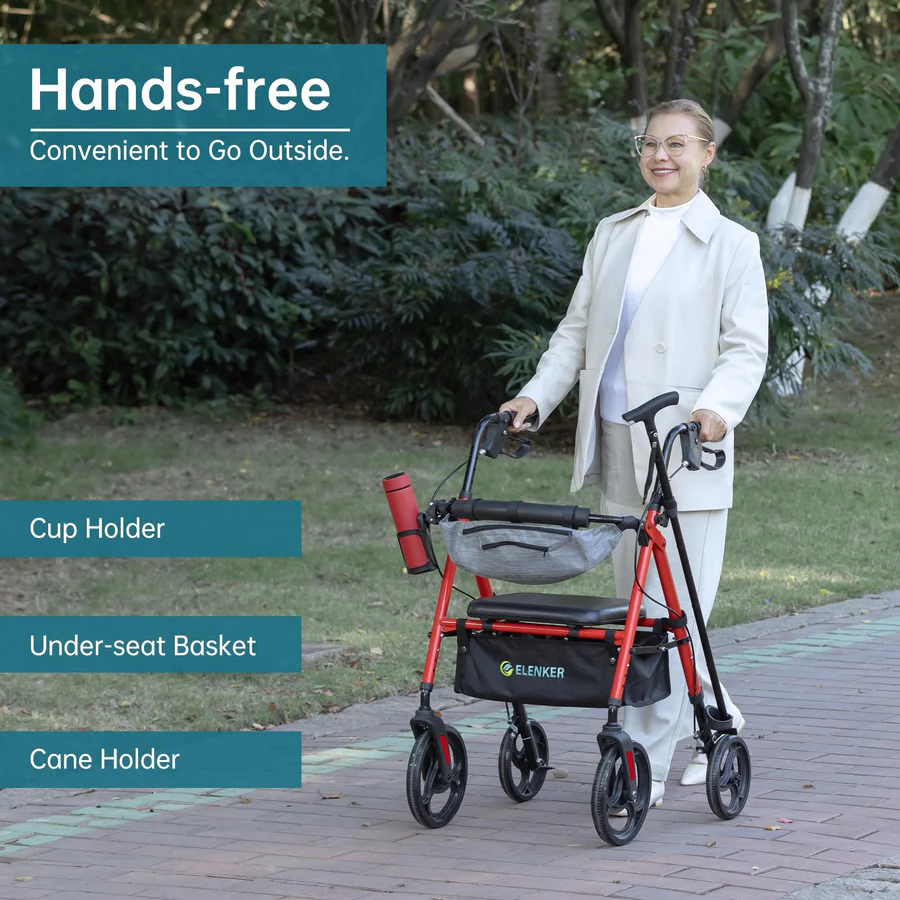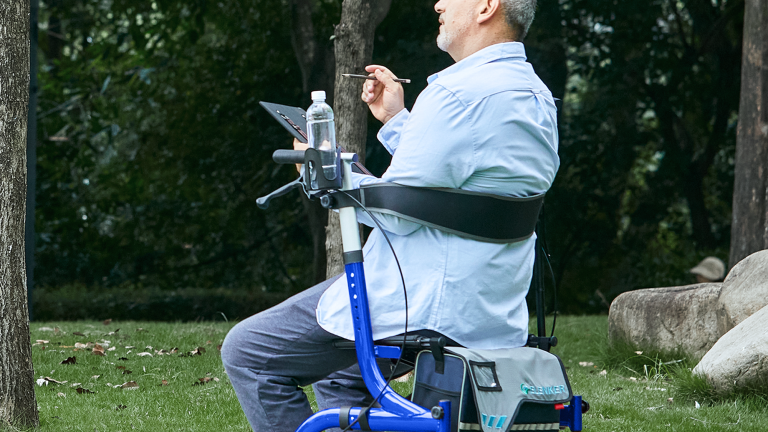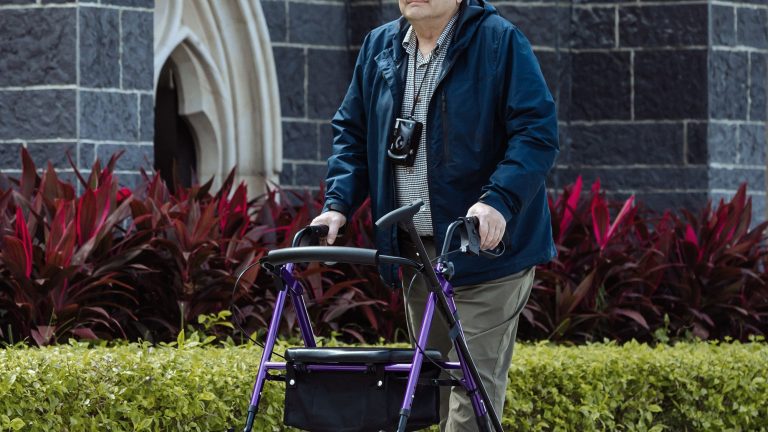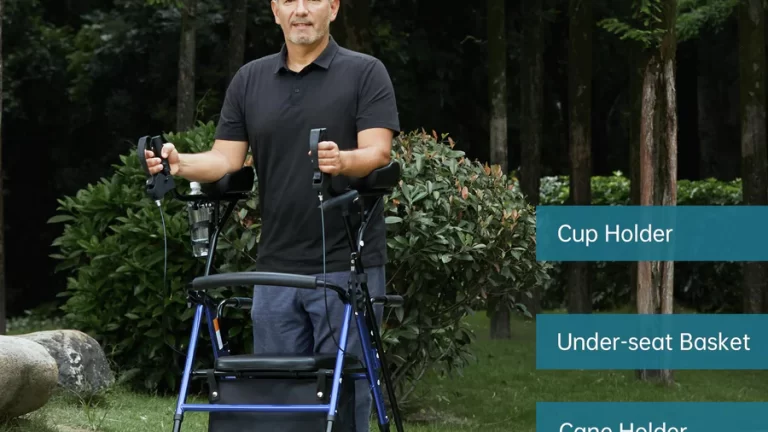When it comes to mobility aids, choosing the right one is super important, especially when you want something that gives you both support and independence. One of the biggest decisions you’ll face is whether to go with a walker with wheels or a traditional walker with no wheels. Both have their pros and cons, but there are some key differences that might help you decide which one is right for you.
Let’s break it down and see how walkers with wheels compare to the traditional variety.
What’s the Difference Between Walkers with Wheels and Walkers Without Wheels?
First, let’s make sure we’re all on the same page. Walkers with wheels (also called rolling walkers) are the ones that come with wheels on the front (and sometimes all four legs). These wheels make it easier to push the walker forward without needing to lift it with every step. Some models even come with a seat for resting while you’re out and about, like an Elenker walker.
On the other hand, walkers with no wheels (also called standard walkers) are completely flat on the bottom. The person using them has to lift the walker with each step, which can make it a bit more physically demanding, especially for people with limited strength.
Now, let’s talk about the advantages and disadvantages of both types.
Advantages of Walkers with Wheels
Easier to Move Around
One of the biggest benefits of a walker with wheels is how much easier it is to move. Since the wheels roll, you don’t have to lift the walker every time you take a step. This makes a rolling walker much less tiring to use, particularly for people who have limited strength or mobility. It also means less wear and tear on the body because you’re not constantly bending down to lift the walker.
Better for Outdoors and Rough Surfaces
Walkers with wheels are usually better for outdoor use. If you like to take a walk around the neighborhood, a rolling walker can handle bumps and curbs much better than a traditional walker. The wheels help you glide over uneven surfaces, making it a lot easier to move on sidewalks, gravel paths, or even grass. If you have a yard or enjoy walking outdoors, a walker with wheels will definitely make life easier.
Less Strain on the Body
Since you don’t have to lift a walker with wheels with each step, there’s less strain on your arms, shoulders, and wrists. This can be a huge relief for people with arthritis or other joint problems. A rolling walker helps to reduce the physical effort needed to walk, so you can move around for longer without feeling exhausted.
Additional Features for Comfort
Many walkers with wheels, especially models like the Elenker walker, come with added features such as comfortable hand grips, a seat for resting, and storage baskets. These added conveniences make a rolling walker much more practical for daily use, whether you’re running errands, going shopping, or just taking a break at the park.
Great for Those Who Need Extra Support
If you need a bit of extra help with your balance, a rollator walker (a type of walker with wheels) can offer more support than a traditional walker. The ability to keep the walker moving smoothly forward while focusing on your balance can provide a greater sense of security. Some people even prefer walkers with wheels because they feel less wobbly and more stable than non-wheeled walkers.
Disadvantages of Walkers with Wheels
Can Be More Difficult to Control
One potential downside to walkers with wheels is that they can sometimes feel a bit harder to control. If the wheels are too sensitive or too big, the walker may roll away from you if you’re not paying attention. This can be particularly tricky when you’re sitting down on the walker or trying to stop on an incline. It’s important to make sure the rolling walker has good brakes that can keep it in place when you need it to.
Less Stable on Certain Surfaces
While walkers with wheels are great for outdoor use, they can sometimes be less stable on indoor surfaces, especially if you have thick carpets or rugs. If you’re planning to use the walker mostly at home, a walker with no wheels might be more stable on smooth, indoor floors. In some cases, you might even want a rolling walker with smaller wheels for better stability in tight spaces.
More Expensive
Generally, walkers with wheels are a little more expensive than walkers with no wheels. They’re usually made with more parts and often come with extra features like a seat, storage basket, and brake system, which can add to the cost. If you’re on a tight budget, a basic walker with no wheels might be a more affordable choice.
Not Always Ideal for Narrow Spaces
Another consideration with walkers with wheels is that they can sometimes be too wide for tight spaces. If you live in a smaller home or apartment, you may find that a rolling walker doesn’t fit through doorways or hallways as easily as a standard walker. If you have limited space and need something more compact, a walker with no wheels might be a better fit.
Advantages of Walkers with No Wheels
More Control and Stability
Walkers with no wheels can offer more control, especially if you have trouble with balance. Since you’re lifting the walker with each step, there’s less chance of it rolling away or moving on its own. This can make it feel more stable and secure, particularly for people who are unsteady on their feet.
Better for Smooth, Indoor Surfaces
If you’re mostly using your walker indoors on smooth surfaces like tile, hardwood, or laminate floors, a walker with no wheels can be a good choice. It provides more stability and doesn’t have the potential for slipping or rolling away.
Lower Cost
Walkers with no wheels tend to be more affordable, as they don’t come with the extra features that walkers with wheels do. If you’re looking for a basic, no-frills option, a standard walker might be all you need to get around safely.
Disadvantages of Walkers with No Wheels
Harder to Move Around
Since you have to lift a walker with no wheels with every step, it can be physically tiring, especially if you’re using it for extended periods. Lifting the walker with each step can be tough on your arms, shoulders, and wrists, making it less ideal for people with limited upper body strength or mobility.
Limited Use Outdoors
Walkers with no wheels are typically not great for outdoor use. They’re designed to be used on smooth indoor surfaces, and they can struggle with bumps, curbs, or uneven terrain. If you want to get outside and enjoy a walk around the neighborhood or the park, you’ll likely find a walker with wheels much more practical.
So, are walkers with wheels better than walkers with no wheels? It really depends on your individual needs and how you plan to use the walker. If you need something that’s easy to move, comfortable for outdoor use, and provides extra support, a rolling walker with wheels is a fantastic option. However, if you want something that’s more stable, affordable, and better for indoor use, a walker with no wheels might be the better fit.
Consider factors like where you’ll be using the walker, how much control you need, and your budget. And no matter which option you choose, make sure to consult with a healthcare professional to ensure you’re getting the best mobility aid for your needs. Whether you go for a walker with wheels or one without, the goal is to find something that helps you move safely and confidently!
